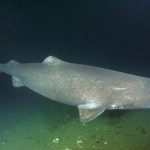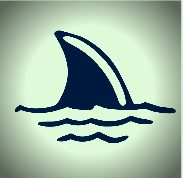It was already known that polar bears, orcas (killer whales) and people build up dangerous levels of toxins from feeding at the top of the Arctic food chain. Now a study shows that sharks are at great risk of contamination in the ocean for being at the top of the food chain.
 Sharks off the shores of the isle of Reunion were proved poisonous by the waste dumped by factories in the ocean. Now, marine scientists have found evidence that a certain population of Greenland sharks (Somniosus microcephalus) could be one of the most contaminated Arctic predators.
Sharks off the shores of the isle of Reunion were proved poisonous by the waste dumped by factories in the ocean. Now, marine scientists have found evidence that a certain population of Greenland sharks (Somniosus microcephalus) could be one of the most contaminated Arctic predators.
Greenland sharks living near the Svalbard Islands, a Norwegian territory far to the north of Scandinavia, contained high levels the pesticides DDT and chlordane and the industrial chemical PCB, according to a study published last year in Science of the Total Environment.
These chemicals, collectively known as persistent organic pollutants (POPs), were banned or restricted in the United States and 90 other nations in a 2001 treaty. However, POPs don’t break down quickly in the environment. Instead, they build up over time in the food web, a process known as bioaccumulation.
POP particles stick to vegetation and microorganisms that animals eat, or are ingested directly. Then the chemicals stay in the food chain and build up as one creature devours another.
In the case of sharks near Svalbard, scientists suggested that the predators were more contaminated because they ate more seals than other Greenland shark populations. The seals contained higher levels of POPs than other prey, because the POPs in each fish the seals ate subsequently became trapped in the seals’ fat. When the sharks ate the seals, the POPs continued to build up.
Previous research on Greenland sharks from near Iceland and the Davis Strait in Canada found lower levels of POPs, likely because these sharks ate fewer seals.
Read more at Discovery.
